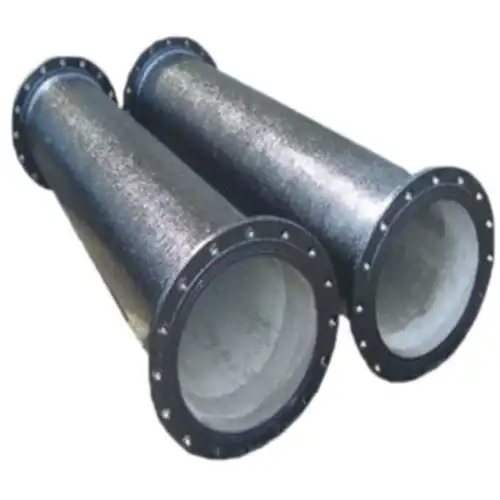ASTM A536 Grade 65-45-12, commonly referred to as 65-45-12 ductile iron, is a widely used material in various industrial applications due to its exceptional mechanical properties and versatility. This grade of ductile iron offers a balanced combination of strength, ductility, and machinability, making it suitable for a range of products, from automotive components to industrial machinery parts.

1. Understanding ASTM A536 Grade 65-45-12
ASTM A536 is the standard specification for ductile iron castings, and Grade 65-45-12 is one of its common grades. The numbers in the grade designation represent the material’s minimum tensile strength (65,000 psi), yield strength (45,000 psi), and elongation percentage (12%) in 2 inches. This grade is characterized by its ferritic matrix, which contributes to its excellent machinability and good surface finishes.
2. Chemical Composition
The chemical composition of 65-45-12 ductile iron typically includes:
-
Carbon (C): 3.6% – 3.8%
-
Silicon (Si): 2.25% – 3.0%
-
Manganese (Mn): 0.15% – 0.35%
-
Sulfur (S): ≤ 0.025%
-
Phosphorus (P): ≤ 0.05%
-
Iron (Fe): Balance
These elements contribute to the material’s overall strength, ductility, and resistance to wear.
3. Mechanical Properties
The mechanical properties of 65-45-12 ductile iron are as follows:
-
Tensile Strength: Minimum 65,000 psi
-
Yield Strength: Minimum 45,000 psi
-
Elongation: Minimum 12% in 2 inches
-
Brinell Hardness: 131 – 220 HB
-
Density: Approximately 7.1 g/cm³
-
Machinability: Excellent
These properties make 65-45-12 ductile iron suitable for applications requiring high strength and good machinability.
4. Microstructure Analysis
The microstructure of 65-45-12 ductile iron consists of nodular graphite in a matrix of ferrite with small amounts of pearlite. This ferritic structure provides excellent machinability and good surface finishes, along with optimal impact strengths, fatigue properties, electrical conductivity, and high magnetic permeability. The microstructure is typically evaluated using ASTM A247 standards.
5. Heat Treatment and Hardening
65-45-12 ductile iron responds well to various heat treatment processes:
-
Annealing: Improves machinability and relieves internal stresses.
-
Normalizing: Refines the grain structure and enhances mechanical properties.
-
Quenching and Tempering: Achieves higher hardness levels, suitable for wear-resistant applications.
-
Surface Hardening: Methods like induction or flame hardening can be applied to increase surface hardness.
These heat treatments allow for tailoring the material’s properties to specific application requirements.
6. Applications of 65-45-12 Ductile Iron
Due to its balanced properties, 65-45-12 ductile iron is used in various applications:
-
Automotive Components: Crankshafts, gears, and brake rotors.
-
Industrial Machinery Parts: Pistons, valves, and housings.
-
Agricultural Equipment: Plow bodies and tillage tools.
-
Construction Equipment: Track shoes and sprockets.
Its versatility makes it a preferred choice in industries requiring durable and machinable materials.
7. Advantages Over Other Materials
Compared to other materials like carbon steel or gray cast iron, 65-45-12 ductile iron offers:
-
Higher Strength: Provides better performance under load.
-
Improved Ductility: Offers better elongation and resistance to fracture.
-
Enhanced Machinability: Easier to machine, reducing production costs.
-
Cost-Effectiveness: Generally more affordable than steel alternatives.
These advantages make it a cost-effective solution for many engineering applications.
8. Cost Considerations
The cost of 65-45-12 ductile iron can vary based on factors such as:
-
Quantity Ordered: Bulk orders may receive discounts.
-
Supplier Location: Proximity to manufacturing facilities can reduce shipping costs.
-
Processing Requirements: Additional machining or heat treatment can increase costs.
It’s advisable to obtain quotes from multiple suppliers to ensure competitive pricing.
9. Global Standards and Equivalents
65-45-12 ductile iron is recognized internationally and has equivalents in various standards:
-
ISO: ISO 450-10
-
China: QT450-10
-
Germany: GGG50
-
UK: 420/12
-
Australia: Grade 500-7
These equivalents ensure that 65-45-12 ductile iron meets global quality and performance standards.
10. Frequently Asked Questions (FAQs)
Q1: What is the significance of the numbers in 65-45-12?
A1: The numbers represent the material’s minimum tensile strength (65,000 psi), yield strength (45,000 psi), and elongation percentage (12%) in 2 inches.
Q2: Can 65-45-12 ductile iron be welded?
A2: Yes, it can be welded using appropriate procedures and filler materials. Preheating and post-weld heat treatment may be required to prevent cracking.
Q3: How does 65-45-12 compare to other ductile iron grades?
A3: 65-45-12 offers a balance of strength and machinability, making it suitable for a wide range of applications. Higher grades like 80-55-06 offer increased strength but may have reduced machinability.
Q4: Is 65-45-12 ductile iron corrosion-resistant?
A4: While it offers some resistance to corrosion, additional protective coatings or treatments may be necessary for applications exposed to harsh environments.
Q5: What industries commonly use 65-45-12 ductile iron?
A5: It’s widely used in automotive, industrial machinery, agricultural, and construction industries due to its favorable properties.
Q6: How should 65-45-12 ductile iron be stored?
A6: It should be stored in a dry environment to prevent rusting. If stored outdoors, protective covers should be used to shield it from moisture.
